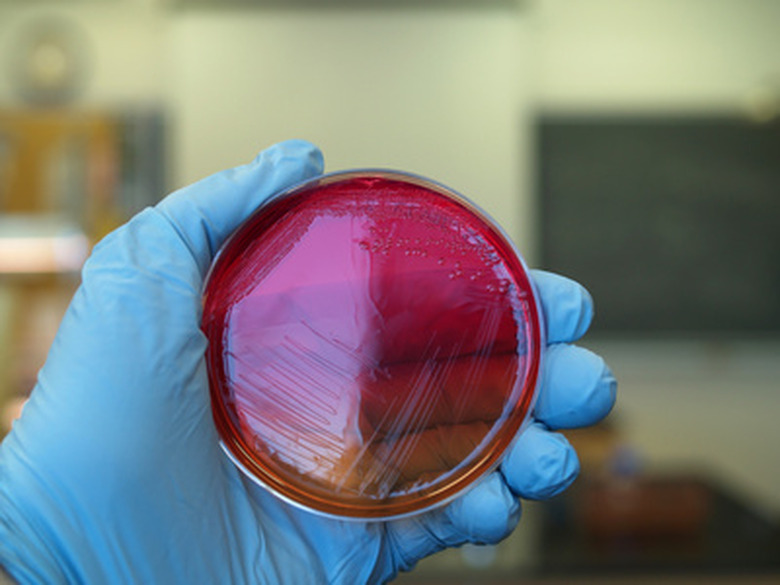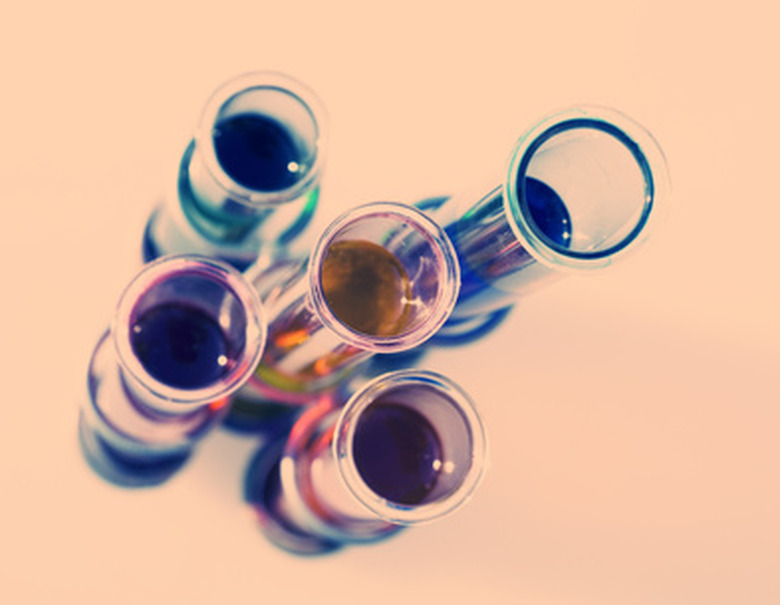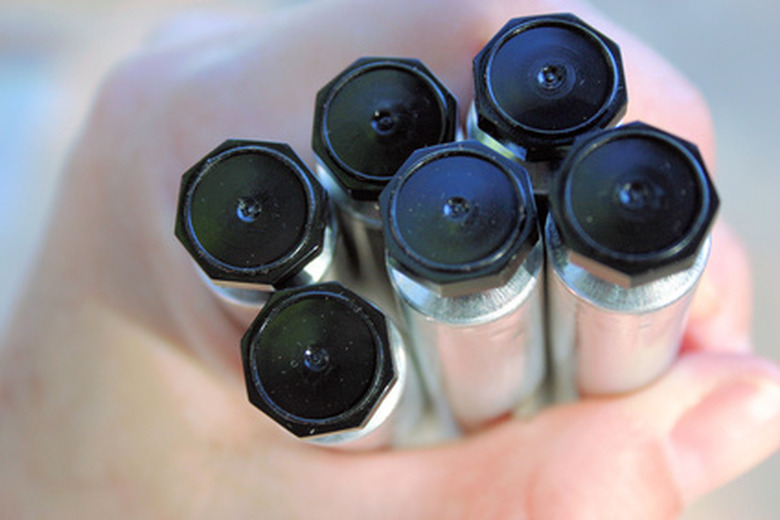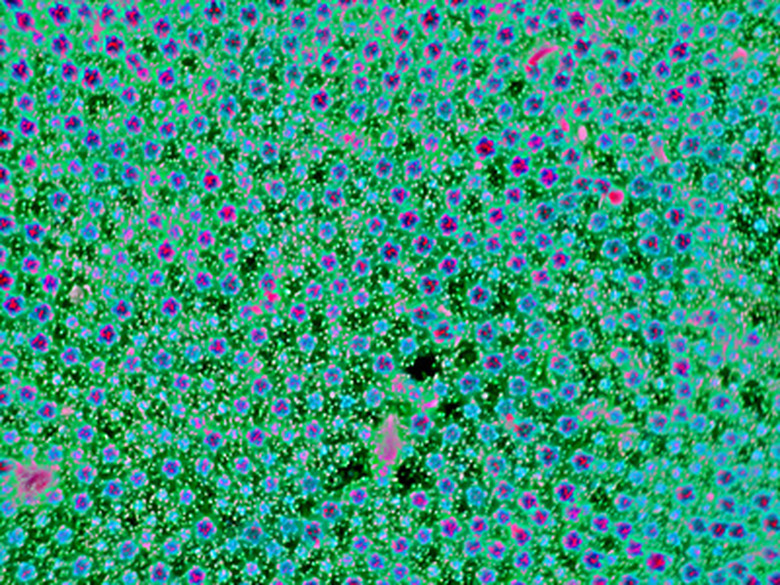How To Work Microbiology Dilution Problems
Dilutions are useful in science when making solutions or growing an acceptable number of bacterial colonies to count. There are three formulas used to work microbiology dilution problems: finding individual dilutions, finding serial dilutions, and finding the number of organisms in the original sample.
Step 1
To find a dilution of a single tube, use the formula: sample/(diluent + sample). The sample is the amount you are transferring into the tube, and the diluent is the liquid already in the tube. When you transfer 1 ml into 9 mls, the formula would be: 1/(1+9) = 1/10. This could also be written as 1:10.
Step 2
After you have calculated the individual dilutions for each tube, multiply the dilutions when using serial dilutions. Serial dilutions are the culmination of a number of diluted tubes used in order to get smaller dilutions. When a sample diluted 1/100 is added to a sample diluted 1/10, the final dilution would be: (1/100) x (1/10) = 1/1000.
Step 3
Use this equation to determine the number of organisms in the original sample once you have found the dilution: number of colonies growing on plate x (1/volume used to put bacteria on plate) x (1/dilution). When a student uses 1ml on a plate from a tube diluted 1/100, and the plate grew 230 colonies, the formula would be: 230 x (1/1ml) x (1/(1/100)) = 23000 or 2.3 x 10^4.
References
- Microbiology Lab Manual TCCD South Campus; Chess, Kleyn, Bicknell, Brown, and Harley; 2009
Cite This Article
MLA
Spear, Marcia. "How To Work Microbiology Dilution Problems" sciencing.com, https://www.sciencing.com/work-microbiology-dilution-problems-7251879/. 24 April 2017.
APA
Spear, Marcia. (2017, April 24). How To Work Microbiology Dilution Problems. sciencing.com. Retrieved from https://www.sciencing.com/work-microbiology-dilution-problems-7251879/
Chicago
Spear, Marcia. How To Work Microbiology Dilution Problems last modified August 30, 2022. https://www.sciencing.com/work-microbiology-dilution-problems-7251879/



